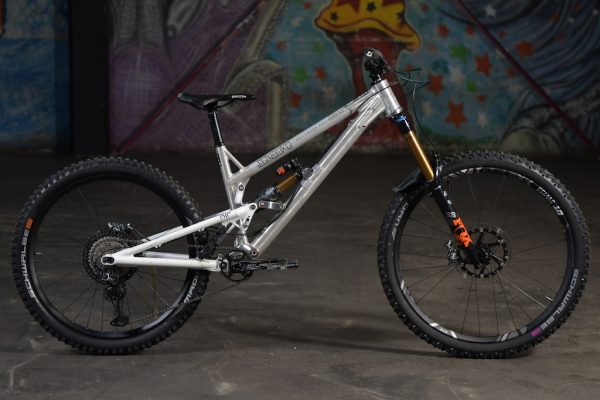A big-hitting German enduro bike, with the promise of amazing small-bump performance.
Do you need more links in your life? Of course, you do. And the Senduro is designed to oblige.
Most dual-suspension mountain bike designs have four or six pivots, but this new German boutique frame has seven. And more links equal greater suspension tuning potential.
The Senduro is a 29er aluminium prototype from German designer Matthias Reichmann. And if you are a follower of downhill racing bike history, you’ll recognize his name as the engineering behind those RIP downhill frames.
Read more: the best enduro bikes

More links – for maximum shock performance
For the Senduro project, Matthias desired to create a long-travel enduro and freeride platform, that could be pedalled uphill, without too much energy loss. His solution is an adapted Watts-type rear-suspension linkage, with seven pivots.
Although having more pivots increases complexity, weight and bearing maintenance, it offers the calibre of shock performance that gravity riders value.
With its seven-pivot set-up, the Senduro reduces linkage friction and increases small-bump sensitivity in the first third of its damping stroke. This is balanced by increased compression damping in the mid-stroke, creating a stable platform when cornering or railing high-speed berms.
Towards the final third of the suspension stroke, there is a further increase in compression to prevent bottoming-out, on big hits. The progression increase in the final 15mm of shock travel, should be very notable, when hucking in severe terrain.
The frame has an adjustable rear travel bandwidth of 170-190mm, which can be balanced by a front fork in the 180-200mm range.

Very long and extremely slack
Geometry numbers are on the extreme end of the gravity riding spectrum, with a 62.5-degree head angle and lots of room between those axles.
Matthias is planning two initial sizes of the Senduro, with a ‘size 1’ featuring 470mm and a 1280mm wheelbase. If you need something even longer and more stable, the ‘size 2’ features 510mm of reach and 1330mm between the wheel centres.
To balance Senduro’s radical geometry, Matthias has experimented with the presence of adjustable chainstays, offering settings of 440-, 450- and 460mm. A horizontally sliding rear axle slot, enables the chainstay length adjustment.
Claimed frame weight is 4kg and Matthias, now operating as Reichmann Engineering and part of the EMRG group, expects the first frames to be ready by summer.
The default configuration is 29er, but those who wish to run their Senduros with a 27.5” rear wheel, will find the frame geometry and clearances to be mullet bike friendly.




